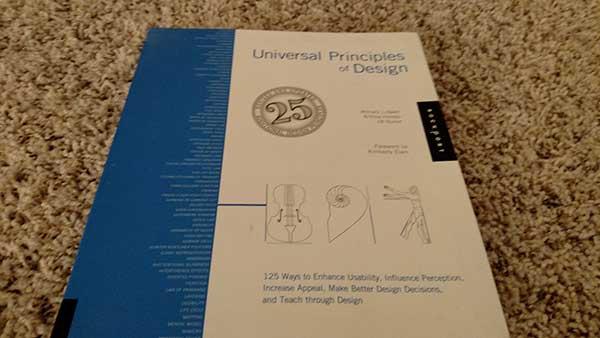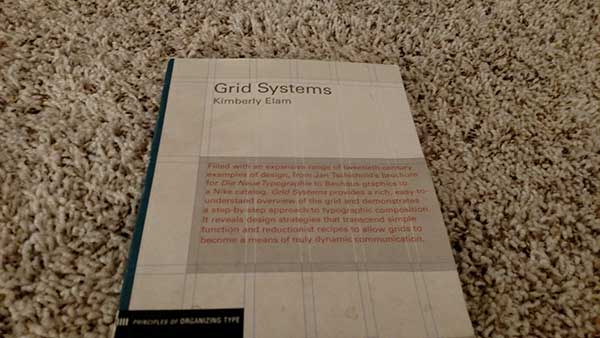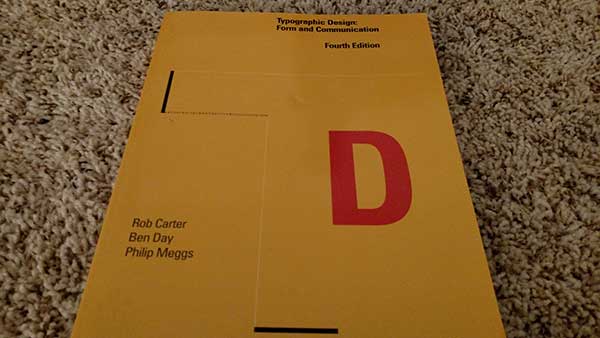The other day as I was rearranging downstairs I came across a box of design books that I had collected during my studies at Metropolitan State University of Denver (back then it was called Metro State College instead of University). I blew off the dust and went through each one, opening up a flood of memories. Going through these books was like a design refresher course; it was so inspiring to reread the contents it was almost as if I was back in school. Here are a few of my favorites:
A Designer’s Research Manual
Jenn + Ken Visocky O’Grady

research
I got this book for my Design Research Methods class. As with many of my assigned textbooks, I didn’t really read it during class but read it later in my school career. It’s a good read for learning how to understand a client’s needs and how to create value through design. It explains important research methods such as quantitative and qualitative research, customer profiling, competitor analysis and ethnography.
Universal Principles of Design
William Lidwell, Kritina Holden, Jill Butler

principles
This book wasn’t for any particular class; I bought it during my senior year because I wanted to learn about the essence of design. It helps you understand that design at its core is a culmination of concepts from a variety of disciplines. Some of the principles include: cognitive dissonance (the tendency for people to look for consistency among their beliefs or opinions), area alignment (alignment based on the area of elements instead of the edges of elements), the 80/20 rule (states that approximately 80 percent of the effects generated by any large system are caused by 20 percent of the variables in that system), the von Restorff Effect (the likelihood of remembering unique or distinctive events or objects versus more common ones) and Wabi Sabi (a type of aesthetic in which objects and environments that embody naturalness and simplicity are more meaningful). I highly recommend this if you are interested in design philosophy and theory.
Thinking With Type
Ellen Lupton

thinking
This book needs no introduction as it is most likely in every designer’s library. If for some reason it’s not in your library, this is the quintessential guide on the best ways to arrange letters and words on a page. I still appreciate and enjoy the design and layout. It has since been revised and expanded into a second edition.
Grid Systems
Kimberly Elam

grids
This is truly a designer’s book. Instead of explaining what grids are and how to use them, this book literally shows you. It uses geometry to show visual alignment and spacing and lots of examples of great typographic design.
The All New Print Production Handbook
David Bann

print
Printers can be a designer’s best friend or worst enemy. This book helps you understand everything there is to know about printing and print production from all the different types of printers and paper to best practices when working with print shops.
Typgraphic Design: Form and Communication Fourth Edition
Rob Carter, Ben Day, Philip Meggs

typographic
Another book on the fundamentals of typography and typographic design. What sets this apart from the others is it shows the evolution of typography from its origin of human writing in ancient times. This inspired my Behind the Type project (the very first website I ever built), which explores the origin and evolution of our Roman alphabet.
The Fundamentals of Illustration
Lawrence Zeegan/Crush

illustration
Illustration was once of my favorite classes. I went to a junkyard and ripped a glove box from an old Toyota to make a bad-ass sculpture. I really didn’t read the book for class but it is an interesting read for those looking to get into illustration professionally. The book covers illustration as communication, how to market yourself as an illustrator, how to gather inspiration and tips and tricks of the trade.
Most if not all of these books have probably been revised into new editions. But after going through these I realized how easy it is to lose sight of design fundamentals and principles after you graduate and get a full-time job. Now when I am stuck or having trouble with a design project, I will be sure to turn to these gems for guidance and inspiration.
So now I’m curious: what books are in your design library? What are some must-haves that aren’t in this list? I would love to know so I can expand my library. Leave a comment or better yet – take pictures of your books and post them On Instagram with the hashtag #AIGACOLibrary.